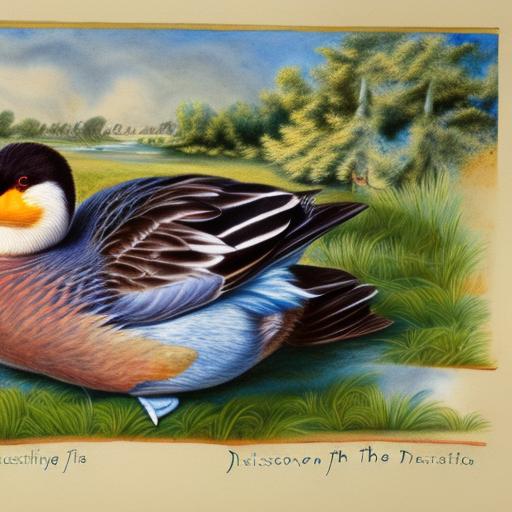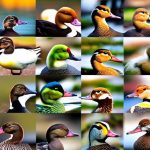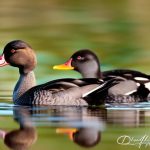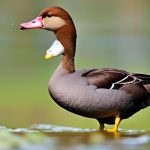Ducks have been domesticated for thousands of years, and throughout history, there have been numerous breeds that have gone extinct. These extinct duck breeds were once an important part of agriculture and provided valuable resources such as meat, eggs, and feathers. However, due to various factors such as changes in farming practices, habitat loss, and the introduction of new breeds, many of these once-popular duck breeds have disappeared. Despite their extinction, these breeds have left a lasting legacy and continue to be remembered for their unique characteristics and contributions to the agricultural industry.
Key Takeaways
- Extinct duck breeds were once a significant part of the poultry industry and had unique characteristics.
- The history of extinct duck breeds dates back to ancient times, with some breeds being mentioned in historical texts and artwork.
- Characteristics of extinct duck breeds varied widely, from size and color to egg production and foraging abilities.
- Causes of extinction for duck breeds include changes in agricultural practices, loss of habitat, and competition from other breeds.
- Efforts to preserve extinct duck breeds include genetic preservation, breeding programs, and education about their historical significance.
The History of Extinct Duck Breeds
The history of extinct duck breeds dates back to ancient times when ducks were first domesticated for their meat and eggs. Over the centuries, different breeds were developed to suit the specific needs of farmers and to thrive in various environments. Some of these extinct duck breeds include the Aylesbury, the Cumberland Blue, and the Rouen Clair. These breeds were once popular for their meat and egg production, but as farming practices evolved and new breeds were introduced, they gradually fell out of favor and eventually became extinct. The decline of these breeds was also influenced by changes in consumer preferences and the demand for more efficient and productive breeds. Despite their extinction, the legacy of these duck breeds lives on through historical records, photographs, and the memories of those who once raised them.
Characteristics of Extinct Duck Breeds
Extinct duck breeds were known for their unique characteristics and physical traits that set them apart from other breeds. For example, the Aylesbury duck was prized for its pure white plumage and large size, making it a popular choice for meat production. The Cumberland Blue duck was known for its striking blue plumage and was valued for its ability to lay a large number of eggs. The Rouen Clair duck, a variation of the Rouen breed, was admired for its beautiful coloration and gentle disposition. These extinct duck breeds were also known for their adaptability to different climates and their ability to forage for food in various environments. Despite their extinction, efforts are being made to preserve the genetic heritage of these breeds through the collection and storage of genetic material.
Causes of Extinction for Duck Breeds
The extinction of duck breeds can be attributed to a variety of factors, including changes in farming practices, habitat loss, and the introduction of new breeds. As agriculture became more industrialized, there was a shift towards more efficient and productive breeds that could meet the demands of a growing population. This led to the decline of traditional duck breeds that were no longer considered economically viable. Additionally, habitat loss due to urbanization and land development has also contributed to the extinction of certain duck breeds. The introduction of new breeds with desirable traits such as faster growth rates and higher egg production further accelerated the decline of older breeds. These factors combined to create a perfect storm that ultimately led to the extinction of many once-popular duck breeds.
Efforts to Preserve Extinct Duck Breeds
Despite their extinction, efforts are being made to preserve the genetic heritage of extinct duck breeds through various conservation programs and initiatives. One such effort is the collection and storage of genetic material from extinct duck breeds in order to maintain their genetic diversity for future generations. This genetic material can be used to reintroduce certain traits or characteristics into existing breeds or to recreate extinct breeds through selective breeding programs. Additionally, there are organizations dedicated to raising awareness about the importance of preserving genetic diversity in domesticated animals, including ducks. By educating the public about the value of extinct duck breeds and the role they played in agricultural history, these organizations hope to inspire greater appreciation for genetic heritage and conservation efforts.
The Legacy of Extinct Duck Breeds

The legacy of extinct duck breeds lives on through historical records, photographs, and the memories of those who once raised them. These breeds played an important role in agriculture and provided valuable resources such as meat, eggs, and feathers. Their unique characteristics and physical traits set them apart from other breeds and made them popular choices for farmers. Despite their extinction, the legacy of these duck breeds continues to be remembered and celebrated by those who appreciate their historical significance. Efforts to preserve their genetic heritage ensure that their legacy will endure for future generations to learn from and appreciate.
The Importance of Remembering Extinct Duck Breeds
Remembering extinct duck breeds is important for several reasons. First and foremost, it allows us to honor the contributions these breeds made to agriculture and the role they played in shaping our agricultural history. By remembering extinct duck breeds, we can also gain a greater appreciation for genetic diversity in domesticated animals and the importance of preserving it for future generations. Additionally, remembering extinct duck breeds can serve as a reminder of the impact that human activity can have on animal populations and the need for responsible stewardship of our natural resources. By learning from the extinction of these breeds, we can work towards creating a more sustainable future for all domesticated animals. Ultimately, remembering extinct duck breeds allows us to celebrate their legacy and ensure that their unique characteristics and contributions are not forgotten.
If you’re interested in learning more about extinct duck breeds, you might also want to check out this fascinating article on PoultryWizard about the importance of providing adequate space for chickens in a coop. The article discusses how the size of a coop can impact the health and well-being of chickens, offering valuable insights for poultry enthusiasts. Learn more about coop size here.
FAQs
What are extinct duck breeds?
Extinct duck breeds are species of ducks that have completely died out and no longer exist in the wild or in captivity.
How many extinct duck breeds are there?
There are several extinct duck breeds, with some estimates suggesting that over 20 species of ducks have become extinct in recent centuries.
What are some examples of extinct duck breeds?
Some examples of extinct duck breeds include the Labrador Duck, the Mariana Mallard, the Pink-headed Duck, and the Reunion Shelduck.
What caused the extinction of these duck breeds?
The extinction of these duck breeds can be attributed to a variety of factors, including habitat loss, hunting, invasive species, and climate change.
Can extinct duck breeds be brought back to life through cloning or genetic engineering?
While there have been discussions about using cloning or genetic engineering to revive extinct species, the technology is not yet advanced enough to bring back extinct duck breeds.
Meet Walter, the feathered-friend fanatic of Florida! Nestled in the sunshine state, Walter struts through life with his feathered companions, clucking his way to happiness. With a coop that’s fancier than a five-star hotel, he’s the Don Juan of the chicken world. When he’s not teaching his hens to do the cha-cha, you’ll find him in a heated debate with his prized rooster, Sir Clucks-a-Lot. Walter’s poultry passion is no yolk; he’s the sunny-side-up guy you never knew you needed in your flock of friends!







